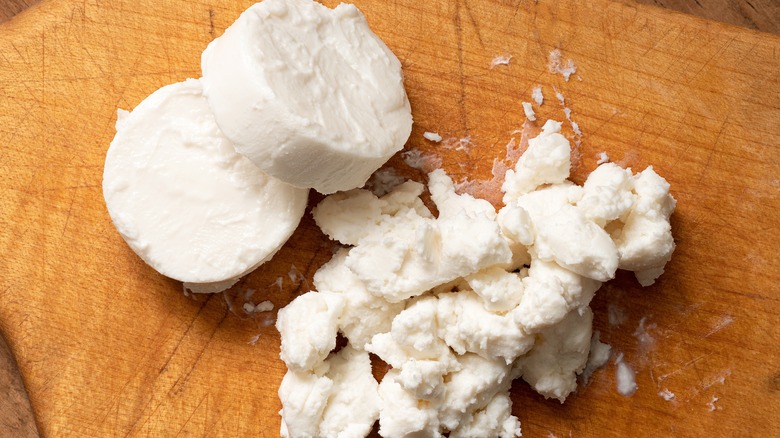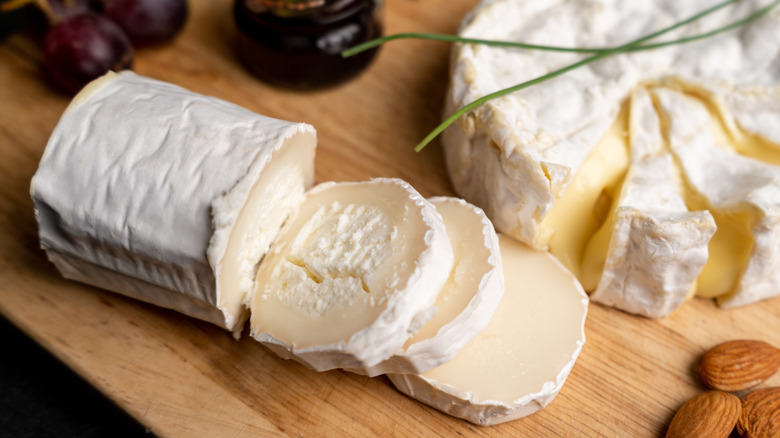The Popular Goat Cheese Myth You Should Unlearn
Out of the many available types of cheese on the market, goat cheese is one type that has a bit of a reputation problem. Perhaps best known as the logs of soft white cheese often served alongside your usual brie and cheddar on a platter, goat's milk cheese is divisive due to its aroma. However, not all goat cheeses are created equal, and there are many cheeses on the market made with goat's milk that do not contain its signature barnyard odor.
The characteristic smell that most people associate with goat cheese is caused by several small chain fatty acids (caproic, capric, and caprylic fat) that are present in higher amounts in goat's milk. As the cheese is made, these fatty acids are released either because the milk was treated too roughly or the cheese was aged with a method that causes the fatty acid to be broken down due to mold or bacteria. Regardless, if you like goat's cheese but not the smell, choose long-aged cheeses.
The world of goat cheese
Although mostly associated with soft and tangy chèvre (French for "goat"), there is actually a world of goat cheeses out there. Since goat's milk has a higher fat content than its bovine counterpart, the resulting cheese is smoother and creamier. The distinctive aroma that turns some people off goat cheese mellows when aged, so cheese connoisseurs should try well-aged varieties to appreciate its flavors without odor.
Often, goat's milk is used instead of cow's milk to create slightly different but familiar varieties of cheeses. For example, goat's milk is used to make a variety of creamy and mild brie. Also, goat's milk is sometimes swapped for sheep's milk during the production of feta cheese, renowned in the Mediterranean. From Spain, there is garrotxa, a firm, aged cheese made with pasteurized milk, with a very mild taste that will dispel all myths about smelly goat cheese.
Goat cheese tips
Given its wide range of styles and flavors, there are many ways to incorporate goat cheeses into your recipes. Grated goat gouda can replace cow's in recipes such as mac and cheese. Since goat cheese is easier to digest, it's especially suitable for people with delicate stomachs. However, it should be noted that goat milk contains lactose, so it is not an appropriate dairy replacement for those who suffer from lactose intolerance. Since lactose is present in the whey, longer-aged cheeses have less lactose, making them a better alternative for those who need lactose-free options.
Other ways to enjoy goat cheese include folding it into omelets with herbs and vegetables for a delicious brunch or breakfast. A goat cheese crostini with cherry tomatoes will be a hit at lunch. Try stuffing goat cheese into chicken breasts before baking them in a spicy tomato sauce for dinner. You can even use goat's cheese to create delectable desserts. Goat cheese's tanginess pairs well with fruits such as apples and also makes for a great cheesecake.



